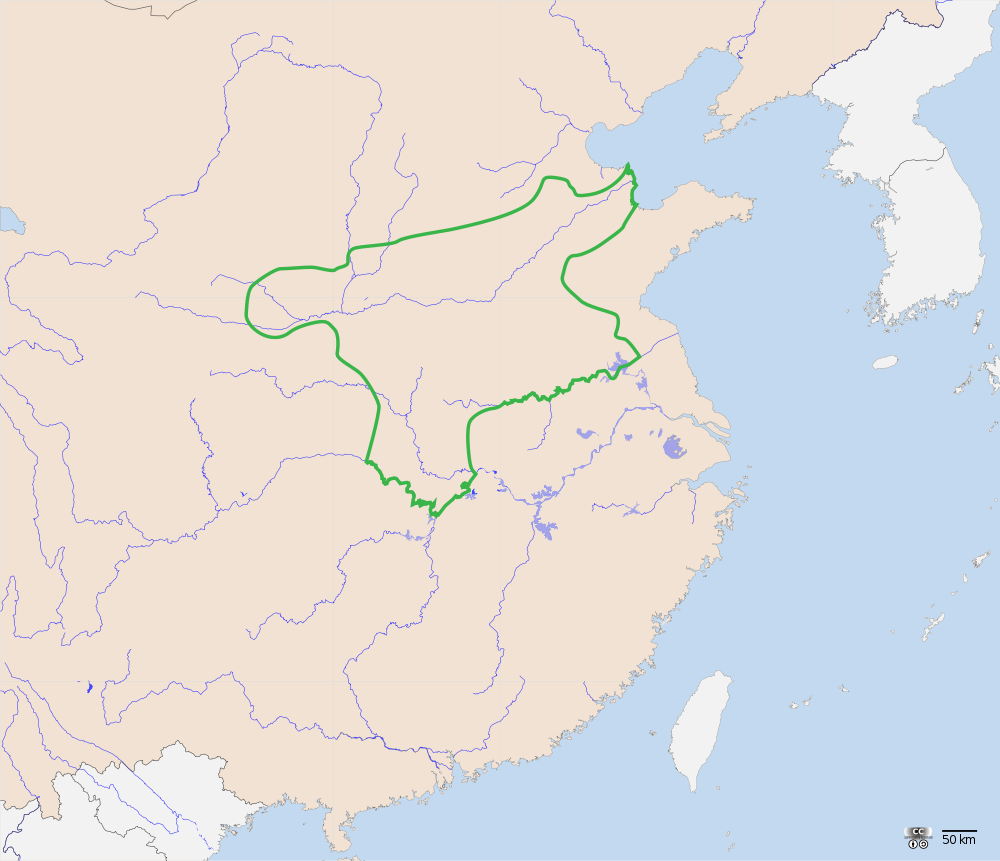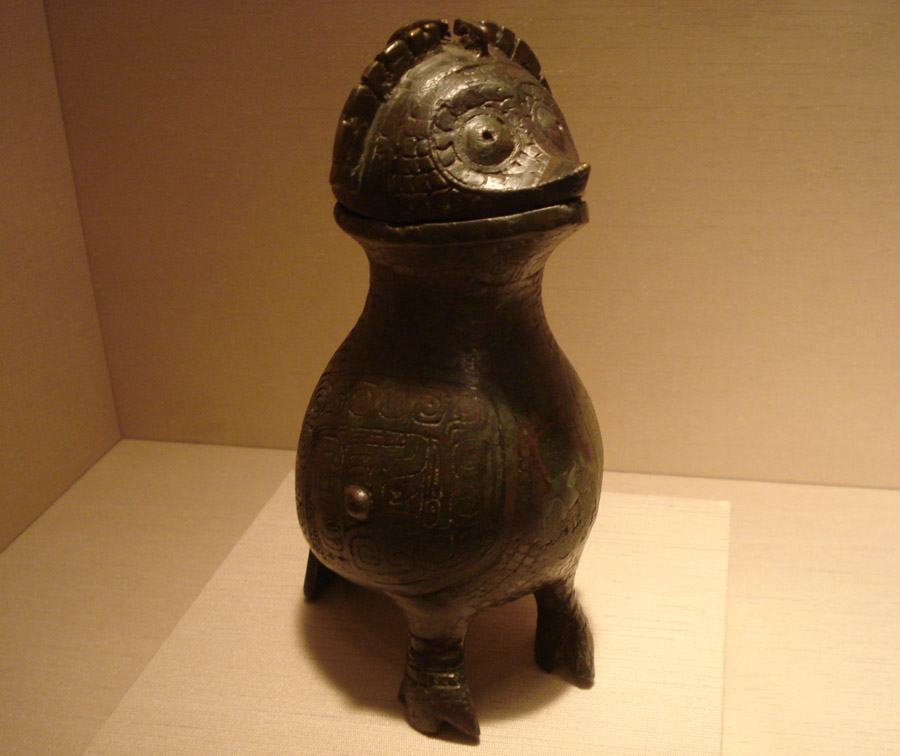The Xia Dynasty was finally ended, when its last emperor Jie was forced to stoop down by his own people because of his tyrannical way of leading, and with the help of Tang he was successfully overthrown and that was the marked end of the reign of the Xia Dynasty and the precedence of the Shang Dynasty.
Rise of the Shang Dynasty
Most of the descendants of the Shang Dynasty inhabited the lower end of the Yellow River during the time of the Xia Dynasty. Its capital was known as Yin that is presently known as the Xiaotun Village, in Anyang City of Henan Province – that is why the dynasty is also addressed as Yin Shang because of its capital city. But King Tang decided to change the capital city in to Bo, which is presently located at the Shangqiu City on Hennan Province. The Shang Dynasty, which was the second established dynasty in the history of China led by King Tang lasted from 1600 B.C. up to 1046 B.C. Some research sources propose that it lasted until 1050 B.C. but despite that the reign of this dynasty lasted for 600 long years. Under Shang Dynasty the history of China as well as its culture undergone massive changes and innovation after each generation of rulers – all in all it was ruled by 30 different emperors through 17 generations.
The Last Shang Emperor and the Priest Class
The last emperor was known as King Zhou, who was known to be the worst king who ruled in the history of China that caused his people to fight against him even his own family did not agree with his way of leadership, he was later eventually defeated by the tribe of Zhou. The Shang Dynasty was an aristocratic form of leadership ruled by a King with the full control over the military nobleness of the country, under the reign of King Tang who was the first king under the Shang Dynasty. During his era of leadership the culture and history of China was gradually improved and enhanced leading to the rise, wealth and growth of the country’s economy and culture. Under his aristocratic leadership is the priest class who was very much responsible for the records of the government as well as the country’s religion.
Shang Religion
During that time the Chinese religion was mainly based on the ancestral worship, they where worshipping different Gods and they greatly believed that the highest God was Shang Ti or Shang Di which was the Lord on high for them since he was the God who ruled over lesser Gods. They also gave much importance in worshipping the earth’s composition, the sky, the land, the moon, the sun, the wind, the star, the land, the sea, the river since they greatly believed that the blessing and prosperity that the country has comes from above and beyond.
King Tang’s Rule
Based on the last leadership style of Jie during the Xia dynasty, King Tang learned from Jie’s mistakes and improved the leadership approach as well as his relationship with the country people whether commoner, official or others. King Tang treated his people with great munificence, consideration, concern, kindness and compassion. King Tang’s subjects adored him and appreciated his compassionate rule. King Tang’s technique of leadership has became a great motivation for his people to impress him leading to various great achievements, enhancements, innovations and discovery in different fields whether in the culture, tradition, crafts, farming, economic style, carving, arts technology, fishing, and others alike. The people under his leadership were inspired and very much motivated by their king’s goodness and love for them that is why they all strive to return all of King Tang’s efforts through their work.
Under the Shang Dynasty with King Tang’s leadership, the people of China lived happy prosperous lives without the trace of Jie’s trail. Chinese culture became been greatly known during this dynasty because of the massive improvement that they underwent.
Shang as China’s Bronze Age
The Shang Dynasty was considered as the mark of China’s Bronze Age since the utilization of bronze compound was greatly practiced during this era plus improvements on the bronze structures also took place at this point in time. During the Shang Dynasty, the consumption of bronze represents wealth, strength, power and luxury since it was used either to build weapons or as ceremonial vessels for food and for wine. The creation of bronze wares was the signal of modernization in this period since people were able to reach the highest quality and level of artistry and creativity. The most famous work and one of the most expensive creations under the Shang Dynasty was the Simuwu Quadripod, which approximately weighs 832.84 kg just about 1836 pounds to be precise. The Quadripod was considered as the largest and heaviest among all the Chinese bronze vessels that ever existed; this is just one of the work of art of the people during that era which serves as evidence of their great artistry style. Porcelain wares are also invented and discovered during that time as well as the practice of jade carvings that was greatly improved during the later years of the period; the woven silk fabrics were at its highest level of quality that has shown the great talent and skills of King Tang’s people.
Shang Dynasty Economy
As for the economical and agricultural root crops the land of China during King Tang’s reign was very much prosperous with the wide spread production of their dominant crops such as millet, wheat, rice, mulberry, hemp and barley, as well as the cultivation of various animals such as dogs, silkworms, pigs, farm sheep’s and ox. The method of fishing also arise during the Shang Dynasty as well as other type of commodity exchange like trading crops for another, settling deals with people from different city exchanging goods for another and so. In the field of culture and music, the creation of musical instruments out of bronze products and casting was established during this era. The technique of bronze casting has been delicately used in making different musical instruments. The archeologists have discovered some of these instruments at the grounds of China. The Xun, which is an instrument made out of baked clay, drums that are made out of bronze and cymbals that are made from copper compound.
Shang Dynasty Technology and Achievements
Several Oracle script pieces where also depicted as a mode of communication, most are found carved on different utensils, animal bones, tortoise shells and bronze vessels. The Oracle scripts also contain some information on various solar and lunar eclipse, events, starts, and other celestial moments that took place that clearly indicates the head start for the Chinese astronomy. The calendar system was continued to be practiced and improved during the Shang dynasty. Elementary counting was also started and the act of fortune telling was already widely practiced and was very much popular for the people. But despite of this improvement made under King Tang’s leadership, the Shang Dynasty still fell when its last King known as Zhou took his term. Just like Jie, the last emperor of Xia Dynasty, Zhou was very cruel, tyrannical and selfish that eventually lead to the rebellion of the his people against him causing the Shang Dynasty to perish after 600 long years of leadership.

